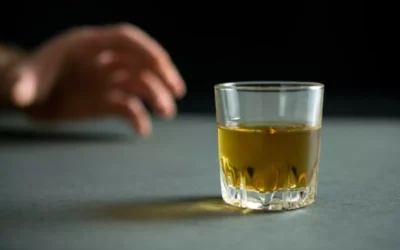For some, attending was just a routine, whereas others stressed that meetings were crucial to them for remaining abstinent and maintaining their recovery process. You’re here because you’ve taken the first brave step in acknowledging that your relationship with alcohol needs a change. You’re not alone, and it’s important to remember that there is no one-size-fits-all solution when it comes to managing alcohol use.
Set Attainable Goals
The present study was limited to the assessment of drinking goal at the onset of treatment and future studies examining drinking goals over the course of treatment seem warranted. Likewise, further research should consider matching patients’ drinking goals to specific treatment modalities, whether behavioral or pharmacological https://ecosoberhouse.com/ in nature. Given data demonstrating a clear link between abstinence goals and treatment engagement in a primarily abstinence-based SUD treatment system, it is reasonable to hypothesize that offering nonabstinence treatment would increase overall engagement by appealing to those with nonabstinence goals.
1 What Is Recovery? study
- His work has been published in leading professional journals and popular publications around the globe.
- Drinking is often a coping strategy subconsciously used to avoid having to deal with uncomfortable or painful issues.
- The results of the Sobell’s studies challenged the prevailing understanding of abstinence as the only acceptable outcome for SUD treatment and raised a number of conceptual and methodological issues (e.g., the Sobell’s liberal definition of controlled drinking; see McCrady, 1985).
- In other words, alcohol use shifts from being rewarding to just trying to prevent feeling bad.
The past decade has seen the AUD service field increasingly embrace the broadergoal of `recovery’ as its guiding vision. However, the NESARC QOL analyses examined transitions across AUD statusesover a three-year period, and thus inherently excluded individuals with more than threeyears of recovery. Therefore, knowledge about whether and how QOL differs betweennon-abstinent vs. abstinent recovery remains limited. Regarding pharmacological interventions for alcohol use disorders, recent laboratory controlled drinking vs abstinence studies of naltrexone have elucidated its mechanisms of action. Importantly, one study examined the effects of naltrexone on alcohol non-abstainers and found that participants who drank regularly during the treatment period benefited more from naltrexone relative to placebo (Ray, Krull, & Leggio, 2010). Together, these findings suggest that naltrexone may be better suited to a controlled drinking approach and thus may be more effective among patients with controlled drinking goals.

The Effects of Drinking Goal on Treatment Outcome for Alcoholism
Before a person can successfully begin their recovery, a vital question to ask is what is my goal? If the answer is a few now and then, the next question to ask is am I honestly able to do that? The majority of people I ask this question to will say no, it is never one or two, it always leads onto more. The only way to ascertain for certain whether you are capable of having just one or two drinks is to try it over a period of time, say 6 months. If during that time, you only ever drink the amount you intend to, and no problems arise as a result of the drinking, then you have found the way that works for you. The first, Medical Management (MM), consisted of nine brief sessions delivered by a licensed health care professional, and was intended to approximate a primary care intervention.
Approaches to Alcoholism Treatment
- You can have an occasional drink without feeling defeated and sliding deeper into a relapse.
- Moderation often requires that you take anti-craving medication for an indefinite period of time.
- In order to be included in that original study, an individual had to be diagnosed with an alcohol use disorder, report a minimum average weekly drinking of 16+ drinks for women and 25+ for men, and express interest in a moderation approach to changing their drinking.
- Models of nonabstinence psychosocial treatment for drug use have been developed and promoted by practitioners, but little empirical research has tested their effectiveness.
Thus, these prior studies have not considered low risk drinking during the course of the treatment episode. Studying low risk drinking patterns during the course of the treatment episode is important to inform future clinical decision making regarding the likelihood of long term outcomes. Second, prior studies have relied on categorization of low risk and heavy drinking using a 5 drink cutoff for heavy drinking (or 4 drinks for women in Maisto et al., 2006, 2007). Specifically, the prior studies created groups based on never exceeding the 5 (or 4) drink cutoff on a single occasion.
Though programs like Alcoholics Anonymous and other well-known programs meant to aid in the recovery from alcohol use disorders and alcohol misuse require or encourage full abstinence, these are not the only solutions known to help people quit or control drinking. But if they have a problem with alcohol, taking a harm reduction approach could be a constructive way to help them take a look at the negative consequences of their behavior and motivate them to make positive changes. Most people who seek out moderation management (MM) have already tried and been unsuccessful at stopping drinking or cutting down on their use. There is also increasing evidence that addictive substances can interact with cycling sex hormones such as estrogen and progesterone. For instance, research has shown that when estrogen levels are high, like before ovulation, alcohol might feel more rewarding, which could drive higher levels of binge drinking.

These contacts had often complemented the support from AA but in some cases also complicated it as the IPs found that their previous SUD was related to other things that were not in line with the approach to addiction as a disease (e.g. IP19). After transcribing the interviews, the material was analysed thematically (Braun and Clarke, 2006) by coding the interview passages according to what was brought up both manually and by using NVivo (a software package for qualitative data analysis). After relistening to the interviews and scrutinizing transcripts, the material was categorized and summarized by picking relevant parts from each transcript.
- The dynamic nature of drinking goal may be an important clinical variable in its own right (Hodgins, Leigh, Milne, & Gerrish, 1997).
- Despite the growth of the harm reduction movement globally, research and implementation of nonabstinence treatment in the U.S. has lagged.
- However, among individuals with severe SUD and high-risk drug or alcohol use, the urgency of reducing substance-related harms presents a compelling argument for engaging these individuals in harm reduction-oriented treatment and interventions.
- Repeated measures latent class analysis (RMLCA; Collins & Lanza, 2009) was used to identify patterns of drinking across 12 weeks of treatment, as described elsewhere (Witkiewitz, Roos, et al., 2017).
Stephanie S. O’Malley
In three Swedish projects, on recovery from SUD, 56 clients treated in 12-step programmes were interviewed approximately six months after treatment (Skogens and von Greiff, 2014, 2016; von Greiff and Skogens, 2014, 2017; Skogens et al., 2017). Clients were recruited via treatment units (outpatient and inpatient) in seven Swedish city areas. Inclusion criteria were drawn up to recruit interviewees able to reflect on their process of change. Therefore, the client should be at the end of or have recently completed post-treatment intervention and be judged by a professional to be in a positive change process regarding their SUD. In the initial interviews, all the clients declared themselves abstinent and stressed that substance use in any form was not an option.
Drinking-reduction goals offer potential to widen the options for measuring and treating alcohol dependence – The Lancet
Drinking-reduction goals offer potential to widen the options for measuring and treating alcohol dependence.
Posted: Wed, 26 Apr 2017 07:00:00 GMT [source]

